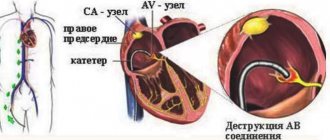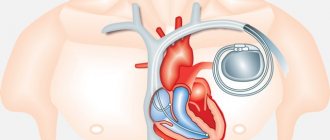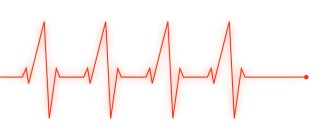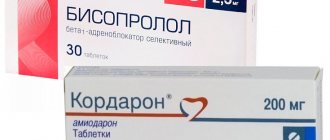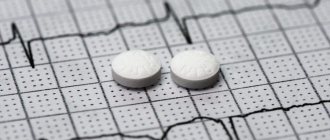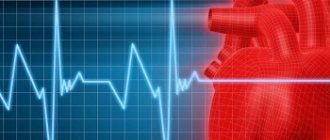Vagal tests are a technique for influencing the vagus nerve by provoking reflexes and irritating the nerve endings of other organs in order to normalize and restore heart function. A similar technique is used for tachycardia to reduce the heart rate.
In case of arrhythmia and extrasystole (disturbance in the rhythm of contraction of some parts and chambers of the heart), the use of vagal tests allows you to restore the heart rhythm. In the presence of SVC in an adult patient (Wolf–Parkinson–White syndrome), vagal tests help restore cardiac impulse and normalize heart function.
The technique of reflex stimulation of the vagus nerve generally has a positive effect on any organism and improves the patient’s overall well-being.
Advantages and disadvantages
Vagal tests for tachycardia, extrasystole and arrhythmia have undeniable advantages over other non-traditional methods:
- they can be used anywhere (many techniques of this method can be used at home, at work or on the street);
- the method of irritating the vagus nerve is not associated with the use of chemicals or drugs, and therefore does not affect the kidneys and stomach;
- suitable for people with allergies;
- the use of vagal methods does not cause harm to health;
- with the correct use of vagal test methods, heart function is completely normalized within a few minutes;
- The vagal test method can be used for patients of any age.
However, vagal tests have disadvantages:
- the use of this method is impossible for heart pain, heart attack and stroke;
- vagal tests for tachycardia and arrhythmia can affect the body only in the absence of a strong stressful situation;
- if performed incorrectly, the technique will not give the desired effect and can harm the body;
- Performing vagal tests for a long period of time without a break can have a detrimental effect on the patient’s well-being, causing nausea, dizziness, and vomiting.
However, the effectiveness of vagal tests on the cardiovascular system and the body as a whole is very high, so this technique has been very popular over the last 20 years.
general description
Supraventricular tachycardia
is a common type of arrhythmia that originates in a zone located above the ventricles of the heart. The main features of this type of arrhythmia are a sharp increase in heart rate and the persistence of a pathological rhythm for a certain period of time. Currently, this heart disorder is very common in people over 20 years of age.
There are five main types of supraventricular arrhythmias, different in etiology and pathophysiology: atrioventricular nodal tachycardia, atrioventricular tachycardia, atrial tachycardia, intraatrial tachycardia, sinoatrial reentrant tachycardia (it should be noted that such types of supraventricular arrhythmias as atrial fibrillation and atrial flutter, as a rule, are worth apart from this group).
At risk:
men and women regardless of age
Indications
Vagal tests are used in healthy people to determine the degree of their impact on the human body, and in sick patients to make an accurate diagnosis.
The use of the technique of active stimulation of the vagus nerve is also used:
- to relieve unpleasant symptoms of tachycardia (sinus and supraventricular) under the supervision of a doctor or by the patient independently;
- for diagnosing sinus insufficiency syndrome in patients over 60 years of age. In this case, patients may lose consciousness or experience severe dizziness when turning their heads, bending strongly, or wearing tight or tight clothing;
- to determine the type of tachycardia while simultaneously using ECG results;
- for arrhythmia, vagal tests are performed in cases of a sharp attack of supraventricular arrhythmia with a stable level of heart function and clear consciousness. Correct execution of a sequential chain of actions normalizes the heart rhythm, including during estrasystole;
- in the complex treatment of SVC in adults;
- for general strengthening of the heart and improving well-being.
Diagnostics
To confirm the diagnosis and clarify the severity of the disease, additional diagnostic methods are needed:
- taking an electrocardiogram (ECG) at rest and during the next attack of arrhythmia
- 24/7 ECG recording is performed (Holter ECG monitoring)
- according to indications, further examination is required to exclude the symptomatic nature of arrhythmic syndrome
- according to indications, it is possible to conduct an endocardial electrophysiological study of the heart in a hospital setting
Contraindications
There are cases when performing vagal tests is strictly prohibited.
These include:
- situations where rapid heartbeat is accompanied by pain in the chest or left arm;
Pain in the sternum in the middle is a contraindication to vagal tests for tachycardia - the patient has severe shortness of breath or cough, which can interfere with exercise;
- with severe weakness in the patient, a sharp drop in blood pressure or dizziness. In this case, any vagal tests can lead to loss of consciousness;
- if you experience convulsions, disturbances in movement or sensitivity in the limbs;
- during pregnancy;
- for arrhythmia, vagal tests are not performed in the case of acute coronary syndrome, signs of thromboembolism or pulmonary arrhythmia.
Any heart rhythm disturbance that is accompanied by similar symptoms may indicate the onset of complications of various types (stroke, pulmonary edema, heart attack). In this case, you must immediately stop any active actions and call an ambulance.
Diagnostics: when and with what to see a doctor?
Any first-time attack of tachycardia that negatively affects your well-being is a reason to consult a doctor! And the more pronounced the clinical manifestations, the sooner you need to consult. If a person loses consciousness during a paroxysm, it is necessary to immediately call an ambulance and perform electrical cardioversion (impact of a pulsed current discharge on the heart).
Doctor's advice: check-up list for suspected tachycardia
To establish a correct diagnosis, the following studies and tests are necessary:
- electrocardiogram - at rest and at the time of rapid heartbeat;
- Ultrasound of the heart - data on the structural structure and valve apparatus;
- daily ECG monitoring;
- transesophageal EPI (TEPE);
- general blood test - will provide information about the presence of anemia and/or inflammation;
- blood test for thyroid hormones and TSH;
- consultation with an ENT doctor (if you have a history of frequent sore throats) and a dentist (caries) to identify and treat foci of chronic infection.
This is the minimum research that will help establish the cause of tachycardia, its nature and type, or allow you to choose a further diagnostic direction. Often, the doctor needs to seek help from fellow arrhythmologists who are able, using modern instrumental methods, to determine the area with pathological impulses. After its localization becomes known, the issue of minimally invasive destruction of the lesion can be decided.
If rapid heartbeat is the result of chronic tonsillitis, then by eliminating the cause (by performing surgical removal of the tonsils), you can forget about the heart problem. Such patients complain of pain in the heart area. Why chest discomfort occurs with a sore throat and how to act correctly - read here.
If the study reveals changes in thyroid hormone levels, or pheochromocytoma is suspected, then an endocrinologist will treat such a patient. It is worth noting that in clinical practice the first symptom of thyrotoxicosis is paroxysm of atrial fibrillation. Therefore, all patients with new-onset atrial fibrillation need to determine the concentration of thyroid hormones in the blood.
Monitoring a person with tachycardia first of all involves monitoring by a specialist who treats the underlying disease. It is a competent approach to the pathology that causes arrhythmia that will help get rid of unpleasant symptoms and minimize the consumption of medications.
What examinations need to be completed
Any impact on the body if the patient is diagnosed with arrhythmia, tachycardia or any other abnormalities in the cardiovascular system can significantly affect the overall health, worsening it.
Unsystematic use of various methods of alternative medicine can provoke a series of attacks or the development of other diseases. Therefore, before influencing the vagus nerve by irritating the nerve endings of other organs and systems, it is recommended to undergo a general examination.
It includes:
- examination by a therapist, during which the specialist identifies the presence of disturbances in the heart rhythm and correlates them with the patient’s complaints;
- ECG of the heart, which can be taken at a clinic as prescribed by a doctor, or at any medical center, shows the presence of deviations from normal indicators of the cardiovascular system. Based on the results of the ECG, it is possible to clearly establish whether the patient has tachycardia, arrhythmia or SVC. The procedure is performed only in a calm state (a few minutes after climbing the stairs and in the absence of stress), otherwise the electrocardiogram readings may be incorrect. The cost of the procedure ranges from 600 to 1200 rubles.
- Blood and urine tests are performed to eliminate possible contraindications. A general blood test is necessary to establish whether the indicators correspond to the norm of hemoglobin, platelets and red blood cells. Based on its results, as well as a urine test, it is possible to determine the presence of inflammatory processes in the body or problems associated with blood clotting. You can get tested at a hospital clinic or medical laboratory. The price of a general urine test will be 350 rubles, and a blood test on average 600 rubles.
- Examination by a cardiologist is carried out only if there is an ECG done no later than 30 days before the date of admission. Based on the results of the analysis and listening to heart sounds, the cardiologist can make a preliminary diagnosis. And also provide advice on the possibility of performing vagal tests at home. If necessary, a cardiologist may prescribe an ultrasound to clarify the diagnosis.
- An ultrasound of the heart is performed to determine whether the condition of the heart and its individual parts corresponds to the patient’s age, and to exclude developmental anomalies and heart defects. Ultrasound examination allows you to determine the size of the heart chambers, the degree of blood ejection and determine the cause of arrhythmia or tachycardia in the patient. The study is carried out in a clinic or medical center and costs an average of 700 rubles.
After examination and diagnosis, the cardiologist in some cases prescribes an individual course of drug treatment. This appointment must be completed before or together with vagal tests.
What it is?
The human heart beats at a rate of 60-90 beats per minute.
These values are considered normal, and an increase in heart rate above 90 is usually called tachycardia. Contrary to popular belief, tachycardia is not always bad! The heartbeat may increase as a result of the body’s adaptation to changed environmental conditions. For example, exercise in the gym, being a physical activity, activates the sympathetic nervous system, which leads to an increase in heart rate and blood pressure. Another example is tachycardia in a patient with bleeding. Due to blood loss and a decrease in hemoglobin levels, hypoxia develops, the myocardium receives an insufficient amount of oxygen, and this causes an increase in heart rate.
Procedure step by step
Vagal tests can be performed independently at home or in a hospital setting under the supervision of a physician. Depending on this, the method of carrying out the procedure differs.
In case of tachycardia, the main procedure for performing vagal tests can only be carried out by a doctor.
It consists of a neck massage and is carried out as follows:
- The patient lies on the couch flat on his back and his head is turned gently to the left.
- Then the doctor begins to massage the right side of the neck under the jaw. At the same time, an ECG is recorded and the heart rhythm is read.
- Massage of the carotid sinus is carried out with smooth circular movements for 7-10 minutes, depending on the patient’s condition.
- After which the patient’s head is turned to the right and the same neck massage is performed on the right.
Carrying out bilateral neck massage at the same time is not allowed due to the likelihood of reducing blood flow to the brain. Massage is performed only if there is no deterioration in the patient’s well-being.
Vagal tests for tachycardia can be performed independently at home using other methods:
Through influence on skin reflexes
The easiest way to influence is through cold massage of the skin.
- To do this, the patient needs to sit up straight and breathe deeply.
- Then the skin of the face should be wiped with 1-2 ice cubes for several minutes.
- After the procedure, the skin is wiped dry.
Another way to treat the skin involves immersing it in cold water:
- Add 10-15 ice cubes to a small bowl of cold water and wait 5 minutes. The water can be cooled in advance in the freezer compartment of the refrigerator or on the balcony in winter for 20 minutes. to a temperature of 5-7 °C.
- Then they hold their breath and immerse their face in a bowl of water for as long as possible. The optimal immersion time is 5-10 seconds. This should be done several times with 1 minute intervals to get the best result.
- After the procedure, you need to wipe your face dry and sit quietly for 5-10 minutes.
By influencing the gag reflex
- To do this, you need to take a clean teaspoon or tablespoon.
- Use the opposite end of the spoon to gently press on the root of the tongue until a gag reflex appears. It is not necessary to induce vomiting, but the gag reflex must be clearly expressed.
- Then you need to take a break of 20 seconds and repeat the procedure 3-4 times.
After 30-90 seconds after the procedure, there should be a significant improvement in overall well-being:
- your heart rate should drop significantly;
- the rhythm is completely restored to normal.
For arrhythmia, you can use basic vagal testing methods, which are recommended for patients with tachycardia. However, the following techniques are used more effectively in this case:
Irritation of the respiratory system
- The patient should sit or stand upright.
- Then, every 5 seconds, the patient should make 5-7 light coughs.
- After which, with a break of 10 seconds. all steps must be repeated. The entire procedure is performed 4-5 times until a slight sensation of excitement appears.
Valsava method
It is universal and is used for tachycardia and arrhythmia, including extrasystole.
This method is based on breathing with low pressure:
- The patient should sit down and stand up straight.
- Then the patient should slowly exhale all the air with effort.
- After that, you slowly inhale through your entire chest, also with effort, and hold your breath for 15 seconds.
- Next, the air is very slowly released from the lungs with great effort.
- All actions are repeated 3-5 times.
Breathing with internal pressure increases the activity of the cardiovascular system. The oxygen entering the bloodstream after holding the breath acts as a shock wave on the body, bringing the rhythm of the heart to a normal state.
Previously, methods of pressing on the eyeballs and the solar plexus area were used as vagal tests for arrhythmia. But due to the unsafe use of such exposure without appropriate training, these methods are currently not recommended for use at home.
In case of extrasystole, when interruptions in the functioning of the heart are associated with a certain state of the body, the following methods of irritating the vagus nerve can be used:
By holding your breath
- To do this, you need to sit and breathe for exactly a few minutes.
- Then, while inhaling, hold your breath for as long as possible and slowly exhale all the air completely. Then carefully inhale.
- The breath-hold must be repeated 3-5 times.
The Valsava method is actively used in the fight against interruptions in heart rhythm. Performing a set of exercises several times in a row reboots the entire body and restores heart rhythm without specialized treatment.
| Disease | Type of vagal tests |
| tachycardia | sinus massage, irritation of the nerve endings of the skin, provoking the gag reflex |
| arrhythmia | breath holding, Valsava method |
| extrasystole | breath holding, Valsava method |
| ERW | Valsava method, provoking the gag reflex |
2. Causes of tachycardia
Most cases of cardiac tachycardia are caused by defects in the electrical connections of the heart. But what causes these problems is still not known.
Tachycardia can be a side effect of certain medications, such as those taken to treat heart or lung conditions.
Some types of tachycardia can be inherited, or be a consequence of lung diseases - COPD or pneumonia.
Visit our Cardiology page
How long will the results last?
Vagal tests for tachycardia, arrhythmia and extrasystole can effectively influence the main symptoms of diseases expressed in mild form.
In this case, when an attack occurs, the use of the technique of irritating the vagus nerve through the effect on the nerve endings of the respiratory and digestive systems, as well as the nerve endings of the skin, quickly restores the heart rhythm, taming it down and normalizing the frequency and function of the heart.
After performing the exercises for a few minutes, the patient’s condition completely improves and the effect persists for several hours and even days in the absence of provoking factors.
Vagal tests are also actively used in the long-term treatment of tachycardia and arrhythmia as a way to combat attacks and measures for general strengthening of the heart. Systematic use of basic methods can significantly improve the condition of the cardiovascular system.
If health conditions deteriorate, including under the influence of unfavorable factors (physical activity, stressful situations, decreased immunity), an attack of arrhythmia, tachycardia and extrasystole may recur 2-3 hours after 1 attack.
To achieve long-term effects, patients are advised to maintain a healthy lifestyle and remain calm. It is the absence of stress that is the fundamental factor in the positive impact of reflex methods on the human body.
In the case of complex forms of heart disease, vagal tests may not always give the desired effect. Before using them, you should consult with a specialist and clarify the possibility of using this technique at home.
In any case, irritation of the vagus nerve during arrhythmia and tachycardia in complex stages can only be used as an addition to the drug course of treatment.
Treatment of cardiac tachycardia: drugs
Sinus tachycardia of the heart in a 1 year old child
When treating cardiac tachycardia, drugs are selected that can reduce the frequency of myocardial contractions, relieve its hyperexcitability, and eliminate other disorders.
When medications do not help, Valsava maneuvers and vagal tests help normalize functionality.
How is the Valsava maneuver performed?
When performing the Valsava maneuver, a person must exhale with his nose and mouth closed. Straining the glottis leads to an increase in abdominal pressure by contracting the abdominal muscles, diaphragm, and contraction of the respiratory muscles. Manipulations allow you to retain air in the pulmonary alveoli. This creates increased intra-abdominal and intrathoracic pressure. Due to the collapse of large veins, the return of blood to the heart is reduced, which leads to a decrease in myocardial excitability.
Vagal tests (Muller) include massage of the carotid artery in the area of the sinus with the glottis closed. During an attack, a gag reflex occurs, a cough impulse occurs, and the likelihood of paroxysm increases.
Antiarrhythmic drugs are also administered intravenously. In the artrioventricular form of the disease, the use of verapamil, finoptin, and isadrin is rational.
Possible complications
Methods of irritating the vagus nerve, such as putting the face in cold water and inducing reflexive vomiting, do not cause any consequences after use. Such methods can be used at any age several times a day without harm to health.
Breath-holding exercises should be performed when the patient has a high level of self-control over his own well-being. If you inhale sharply or hold your breath for a long time, the patient may lose consciousness, which can result in injury if they fall.
Actively performing breath-holding exercises can cause blockage of certain blood vessels in the brain and cause the development of other diseases. Therefore, you need to perform such exercises carefully. If you experience discomfort or deterioration in your health, it is better to refuse vagal tests and consult a doctor.
The carotid sinus massage method, when performed at home by a person without appropriate education, can lead to serious health complications:
- cause a strong outflow of blood from the brain with the onset of oxygen starvation;
- cause damage to the spine and neck muscles;
- cause swelling and damage to the soft tissues of the neck;
- increase pressure.
Vagal tests in general are not recommended in case of a sharp deterioration in general health in patients with tachycardia or arrhythmia. Active use of this technique at the stage of relapse of severe attacks of arrhythmia, tachycardia without completing the necessary course of drug treatment can lead to heart attack, stroke and the development of vascular thrombosis.
The risk of developing adverse effects increases sharply in older people or those suffering from other chronic diseases (diabetes mellitus, thrombophlebitis).
However, after consulting with a doctor and undergoing a course of treatment, eliminating the main contraindications, the method of influencing the vagus nerve when performed at home can give excellent results and gradually improve the entire cardiovascular system.
Article design: Vladimir the Great
4. Treatment of the disease
When cardiac tachycardia does not cause any serious symptoms or deterioration in well-being, it usually does not require treatment. But if tachycardia causes various health problems, the doctor will prescribe the necessary treatment for tachycardia. To treat an attack of tachycardia, medications may be recommended that will need to be taken during an attack of tachycardia. In addition, the doctor will tell you how you can slow down your heart rate without medications.
. This can be done, for example, by coughing, gagging, or putting your face in ice water.
If this does not help, and the tachycardia is quite severe, you need to seek emergency help. Doctors will stop the tachycardia using strong, fast-acting medications, and in particularly serious cases, perform an electrical cadioversion
, which uses an electrical current to slow the heart rate.
If episodes of tachycardia occur frequently, you may need to take daily medications to prevent attacks or slow your heart rate. Another way to treat tachycardia is surgery.
destruction of a tiny section of the heart that causes tachycardia.
Action tactics: what's the difference
Tachycardia symptoms and treatment, which tablets to take
If abnormalities of a physiological nature occur in the functioning of the heart, treatment is usually not required. It is enough to eliminate the cause of their appearance, and everything returns to normal. It’s another matter if the etiological factor is a disease. In this case, it is necessary to carry out full-fledged treatment, the goal of which is to completely eliminate the disease or transfer the pathology to a state of stable remission.
We remove provoking factors
To normalize the rhythm, it is recommended to remove factors that contribute to the appearance of tachycardia or arrhythmia:
- Review your diet. Eat often and in small portions, exclude spicy, salty, and caffeinated drinks from your diet.
- Try to avoid physical and psycho-emotional overload.
- Observe the work and rest schedule.
- Take walks at an average pace and breathe clean air.
- Stop drinking alcohol and quit smoking.
You can get more detailed information about what tachycardia is, what its types are, and also find out how to eliminate the pathology here.
We use medications
Medicinal methods include the use of the following medications:
- sedatives (motherwort, Valocordin);
- beta blockers (Atenolol, Bisoprolol);
- calcium antagonists (Amlodipine).
You can add herbal decoctions to general therapy. Chamomile, valerian, and hawthorn are used to improve cardiac activity. But they should not be used as the main means of stopping an attack.
A detailed description of tablets and other medications, as well as the features of their use for tachycardia, can be seen by going here.
Surgical treatment of severe pathology
Severe forms of rhythm and conduction disorders require the use of surgical treatment methods. Depending on the cause, the specialist recommends the following radical methods:
- radiofrequency ablation;
- installation of an artificial pacemaker;
- implantation of a cardioverter-defibrillator;
- valve restoration;
- shunting for blood flow problems.
The prognosis for arrhythmia depends on the etiological factor of its occurrence. But in general, compared to tachycardia, it is more severe and more often leads to various complications and even death.
The following sources of information were used to prepare the material.
Diagnostic research methods
Symptoms of suspected arrhythmia need to be carefully checked. Alarming signs include not only rapid heartbeat, but also sudden cardiac arrest, pressure changes, weakness, alternating with drowsiness.
Many methods have been developed to diagnose arrhythmia. An electrocardiogram must be recorded - it can be short or long. Sometimes doctors provoke an arrhythmia to record readings and more accurately determine the source of the problem. Thus, diagnostics are divided into passive and active. Passive techniques include:
- Electrocardiography. Electrodes are attached to the patient's chest, arms and legs. The duration of the contraction phases of the heart muscle is studied and the intervals are recorded.
- Echocardiography. An ultrasonic sensor is used here. The doctor receives an image of the heart chambers, observes the movement of the valves and walls, and specifies their sizes.
- Daily ECG monitoring. This diagnosis is also called the Holter method. The patient carries a portable recorder with him at all times. This happens within 24 hours. Doctors receive information about heartbeats during sleep, rest and activity.
In some cases, passive research is not enough. Then doctors induce arrhythmia by artificial means. Several standard tests have been developed for this purpose. Here they are:
- exercise stress;
- mapping;
- electrophysiological study;
- Tilt table test.
